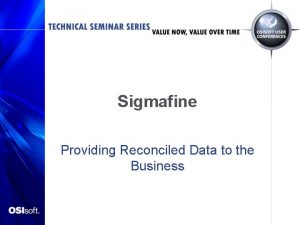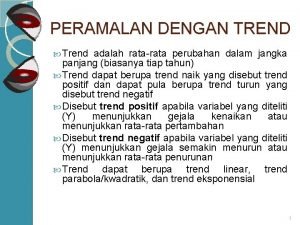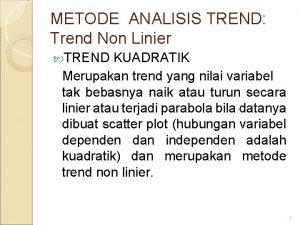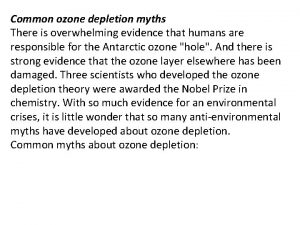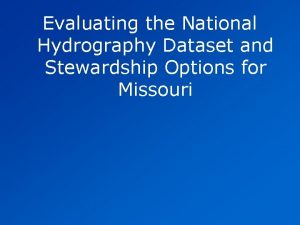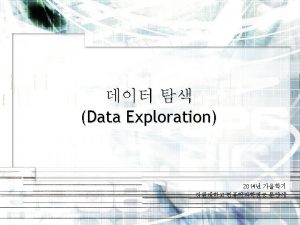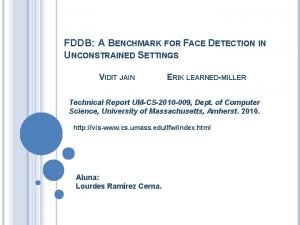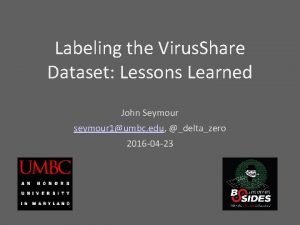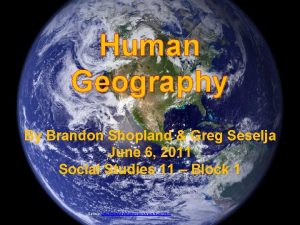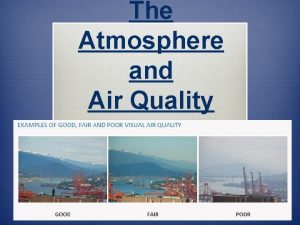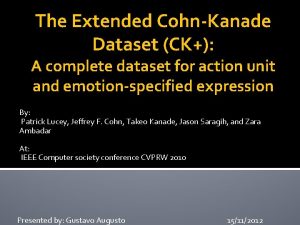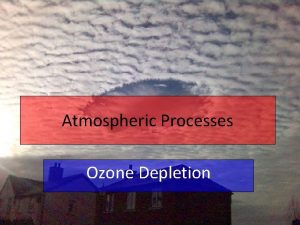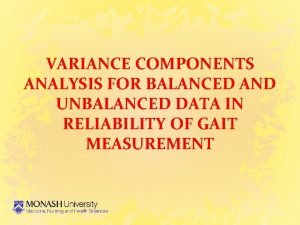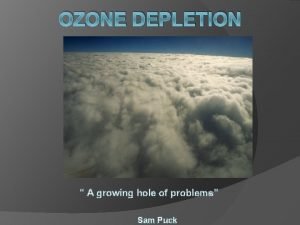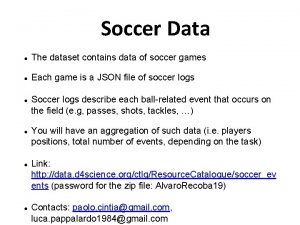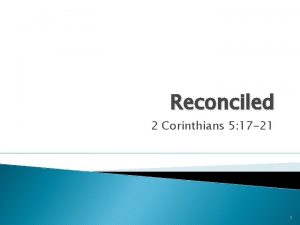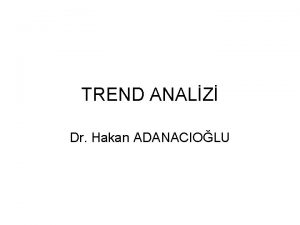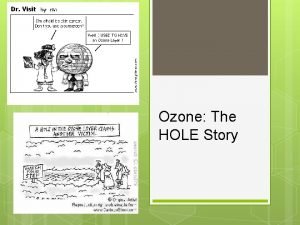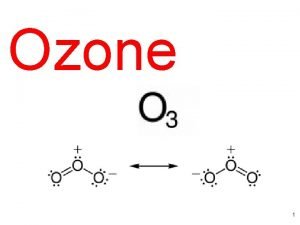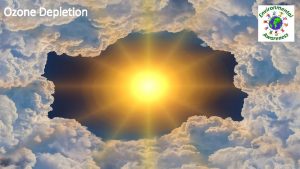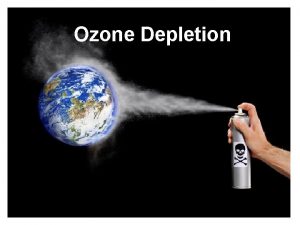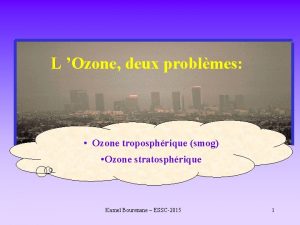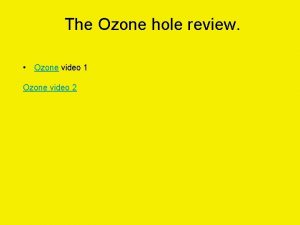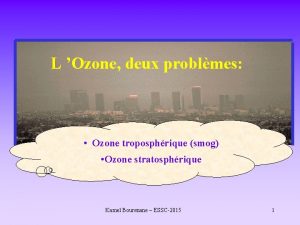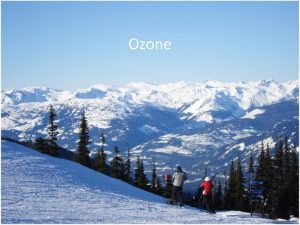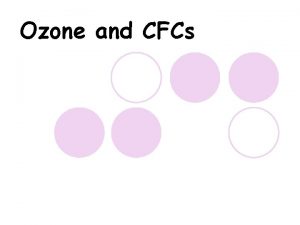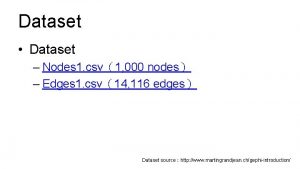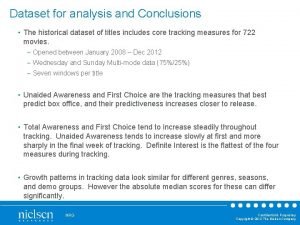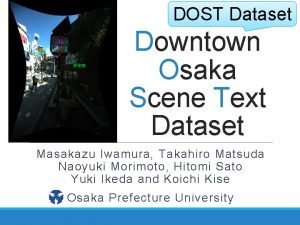The Need for Ozone Reconciled Dataset for Trend





















- Slides: 21

The Need for Ozone Reconciled Dataset for Trend Analysis Vitali Fioletov

The Montreal Protocol Parties’ Request (Decision XIX/20) v Assess the state of the ozone layer and its future evolution v Evaluate recent Antarctic ozone hole and Arctic ozone depletion behavior v Evaluate trends of ozone-depleting substances in the atmosphere v Assess the impacts of climate change on ozone layer v Analyze atmospheric concentrations of bromine and implications for the ozone-layer v Describe surface ultraviolet radiation observations and future expectations v Assess interaction between tropospheric and stratospheric ozone v Assess approaches to evaluating very short-lived substances

WMO/UNER Ozone Assessment 2010 Chapters and Coordinating Lead Authors Chapter 1: Ozone-Depleting Substances (ODSs) and Related Chemicals Steve Montzka (NOAA, USA) Stefan Reimann (EMPA, Switzerland) Chapter 2: Stratospheric Ozone and Surface Ultraviolet Radiation Anne Douglass (NASA, USA) Vitali Fioletov (Environment Canada, Canada) Chapter 3: The Future of the Ozone Layer and Its Impact on Surface UV: The Influence of ODSs, Climate, and Other Factors Slimane Bekki (CNRS, France) Greg Bodeker (NIWA, New Zealand) Chapter 4: Impact of Stratospheric Changes on Climate Piers Forster (University of Leeds, UK) Dave Thompson (Colorado State University, USA) Chapter 5: Information and Options for Policymakers John Daniel (NOAA, USA) Guus Velders (Netherlands Environmental Assessment Agency, Netherlands)

Global total ozone deviations from the pre-1980 level Annual mean area weighted global total ozone deviations. While global ozone was fairly constant during 1996 -2008, the average values are about 4% lower during that time than those of the late 1970 s. 4

Vertical profile of ozone trends over northern and southern midlatitudes estimated from ozonesondes, Umkehr, SAGE I+II, and SBUV(/2) for the period 1979 -2004 The trends were estimated using regression to an EESC curve and converted to %/decade using the variation of EESC with time in the 1980 s. The 2σ error bars are shown (from WMO Ozone Assessment 2006)

Ozone in the upper stratosphere (35 -45 km) Upper stratospheric ozone anomalies from the satellite-borne sensors agree within 5% or better with ground-based data at five stations of the Network for the Detection of Atmospheric Composition Change (NDACC), from 45 S to 48 N. From 1979 until the late 1990 s all data show a clear decline of ozone near 40 km, by 10% to 15%. This decline has not continued in the last 10 years. At some sites, ozone at 40 km appears to have increased since 2000, consistent with the beginning decline of stratospheric chlorine. Steinbrecht et al. , IJRS, 2009,

Ozone variations from satellite data at 37 km SBUV(/2) data merged with SAGE

Ozone variations from satellite data at 37 km SBUV(/2) data merged with SAGE +…

Satellite measurements of ozone profiles – Backscatter UV measurements (SBUV(/2), GOME, SCIAMACHY) • Global coverage • Biases in individual instruments that are time and altitude-dependent • Low vertical resolution (>5 km) – Limb measurements (OSIRIS, SCIAMACHY) • Vertical resolution ~3 km • Poor spatial resolution • Good coverage, but with gaps – Occultation measurements (SAGE, ACE) • • Absolute measurements, low uncertainties Poor spatial resolution High vertical resolution ~ 1 km Limited spatial coverage

Monthly mean ozone time series comparison of 6 instruments in nine altitude/latitude bins; SAGE I+II (blue), SBUV/2 (orange), HALOE (red), SMR (magenta), OSIRIS (black), SCIAMACHY (cyan). The bins range from 60 S to 60 N in an altitude range from 20– 45 km (Jones et al. , 2009).

Quasi-biennial signals in SAGE and SBUV data Quasi-biennial signals in (a) SAGE II data and (b) merged SBUV data. Plotted are monthly, zonal-mean ozone anomalies in the tropics (5 S 5 N). Anomalies were calculated as percent deviations from the 19781990 means.

Stratospheric ozone trends in %/decade SAGE SBUV SAGE-corrected SBUV The left column of plots displays ozone trends from published data: (a) SAGEI+II (reproduction of Randel and Wu, (2007) calculations), (b) the NASA merged SBUV data set, (c) SAGE-corrected SBUV (Mc. Linden et al. , 2009). For paned (c) SAGE I+II converted onto a pressure using a temperature trend from Randel et al. (2009) and then vertically smoothed to match the SBUV vertical resolution. Shading indicates the trends are significant at the 2 − σ level. Panel (a) is plotted in altitude, the remaining panels in pressure-altitude. Pressure-altitude is defined as z∗ = − 16 log 10(p/1000), where p is in h. Pa and z∗ is km. Trend contours are every 2%/decade

Reconstruction of time series based on March O 3 original SBUV(/2) time series March values of original SBUV(/2) time series reconstructed time series The reconstructed time series captures well all the features of the original time series (r=0. 88). S. Tegtmeier et al. , 2009

Questions • • • How to combine ozone profile records from different satellite instruments ? How to deal with uncertainties related to composites of satellite records? How do the records depend on the available meteorological data used?

Possible procedure and planning • IGACO-O 3/UV lead with help from WMO SAG-Ozone, SPARC and IOC • Support from – the space agencies (ESA, NASA, …), – meteorological agencies involved in satellite and ground-based measurements – leading scientists in the field • Workshop in late 2010 or early 2011 to develop a work plan Neil Harris and Johannes Staehelin, March 2010


Solar Cycle 30 km 37 km 43 km 33 km 40 km 46 km Deseasonalized, deternded and adjusted for biases SBUV(/2) data from Nimbus 7 and NOAA-9, 11, 16, and 17 satellites in different layers for 25 S-25 N. The seasonal cycle was estimated from Nimbus-7 data and then subtracted from the other data sets. The black line represents the solar cycle estimated from the 27 -day cycle.

Persistence of HALOE NOx anomalies Persistence of NO 2 and NOx anomalies points to mechanism that transportinduced NOy anomalies and their seasonal persistence cause the observed persistence of ozone anomalies Number of years too small to calculate meaningful correlation coefficients NOx anomalies clearly persist from winter until the following autumn

Persistence of other trace gases

% The mean value of the GOME minus EP TOMS difference in percent for 1996 -2000. %

% The seasonal amplitude of the GOME-EP TOMS difference in percent for the 60 S-60 N region for 1996 -2000.
 Definition of medication reconciliation
Definition of medication reconciliation Sigmafine mass balance
Sigmafine mass balance Be reconciled to your brother
Be reconciled to your brother Defense travel management office
Defense travel management office Contoh soal analisis trend
Contoh soal analisis trend Metode trend kuadratis
Metode trend kuadratis Tacred dataset
Tacred dataset Ozone hole myth
Ozone hole myth Multiple regression dataset
Multiple regression dataset Vray sky model
Vray sky model Usgs national hydrography dataset
Usgs national hydrography dataset Uci iris data
Uci iris data Face detection benchmark
Face detection benchmark Virusshare dataset
Virusshare dataset Herbicides definition ap human geography
Herbicides definition ap human geography Sulphur oxide
Sulphur oxide Cohn kanade dataset
Cohn kanade dataset Ozone nasa
Ozone nasa Uniform closing disclosure
Uniform closing disclosure Balanced and unbalanced dataset
Balanced and unbalanced dataset Ozone layer simple definition
Ozone layer simple definition Soccer dataset
Soccer dataset

